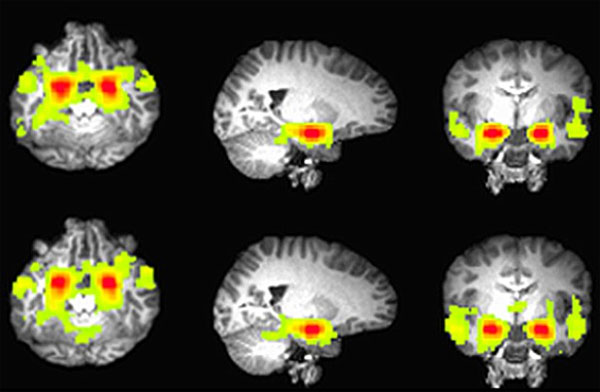Revealing the secret of a spoiled teenage brain
Scientists have discovered why some teenagers are so engaged in serious risks, even taking action against society.
New research by experts from the Center for Brain Health at the University of Texas (USA) has found an increase in the linkage between certain brain regions in teenagers who are easily damaged.
"Our brain has a network that regulates emotions , which exist to manage emotions and influence decision making. Behavior seeking adventure or against society can be embedded. with the imbalance in this network, " Sam Dewitt, the head of the research, explained.
Mr. Dewitt and his colleagues conducted research on 36 teenagers between the ages of 12 and 17. Half of them were adventurous and reckless people, while the rest were underweight, less risky.

Research subjects have been screened for risky behaviors, such as the use of alcohol and stimulants, sexual indiscrimination and physical violence, as well as undergoing a community scan. magnetic function (fMRI) brain to check the status of information exchange between brain regions associated with the emotional coordination system.
The results revealed, adventurous adolescents have an abnormal increase in connection between the amygdala , a brain region responsible for the ability to react emotionally to certain areas of the prefrontal cortex, the capital. associated with emotional coordination and critical thinking skills.
The team also found an increase in activity between areas of the prefrontal cortex with the nucleus region, a sensitive center for happy, satisfying feelings.
According to Dewitt, new discoveries are important, because they can help identify potential biological signs in the brain, potentially explain behavioral differences and be able to identify teenagers. There is a risk of future dangerous and dangerous behavior.
Mr. Dewitt also noted that, even if the adventurous youth group made a reckless, corrupt behavior, none of them would be classified as a systematic behavioral disorder or substance abuse. system of clinical diagnosis.
Therefore, through the identification of these risk factors early on, the team hopes to have a better chance of preparing solutions to help young people who take risks to control emotions and avoid dose behaviors. field, harmful to society.
- Shocking facts about the human brain
- 15 incredible facts about the brain
- Crime of 'contagious' behavior in minors
- Revealing the world's first human brain map
- Secret of taking advantage of the 'brain power' of 20 years old
- The secret to a healthy brain
- Jogging teen, his older brother
- Revealing the secret flying saucer of Russia
- Revealing the secret of the golden ratio
- America spent 100 million USD to discover the secret of human brain
- Drink milk daily to be healthier
- Secrets in the brain of people who commit suicide because of depression
 Green tea cleans teeth better than mouthwash?
Green tea cleans teeth better than mouthwash? Death kiss: This is why you should not let anyone kiss your baby's lips
Death kiss: This is why you should not let anyone kiss your baby's lips What is salmonellosis?
What is salmonellosis? Caution should be exercised when using aloe vera through eating and drinking
Caution should be exercised when using aloe vera through eating and drinking Does exercising our minds a lot help us burn excess calories?
Does exercising our minds a lot help us burn excess calories?  How did Egyptian mummies remove the brain from the body?
How did Egyptian mummies remove the brain from the body?  Shocking evidence that near-death experiences are real in people who have had cardiac arrest
Shocking evidence that near-death experiences are real in people who have had cardiac arrest  AI has been able to accurately reproduce more than 80% of images in the human brain.
AI has been able to accurately reproduce more than 80% of images in the human brain.  Neuralink tests controlling a robotic arm with thoughts
Neuralink tests controlling a robotic arm with thoughts  Elon Musk's ambition to merge humans with AI
Elon Musk's ambition to merge humans with AI 